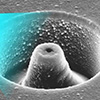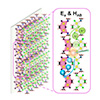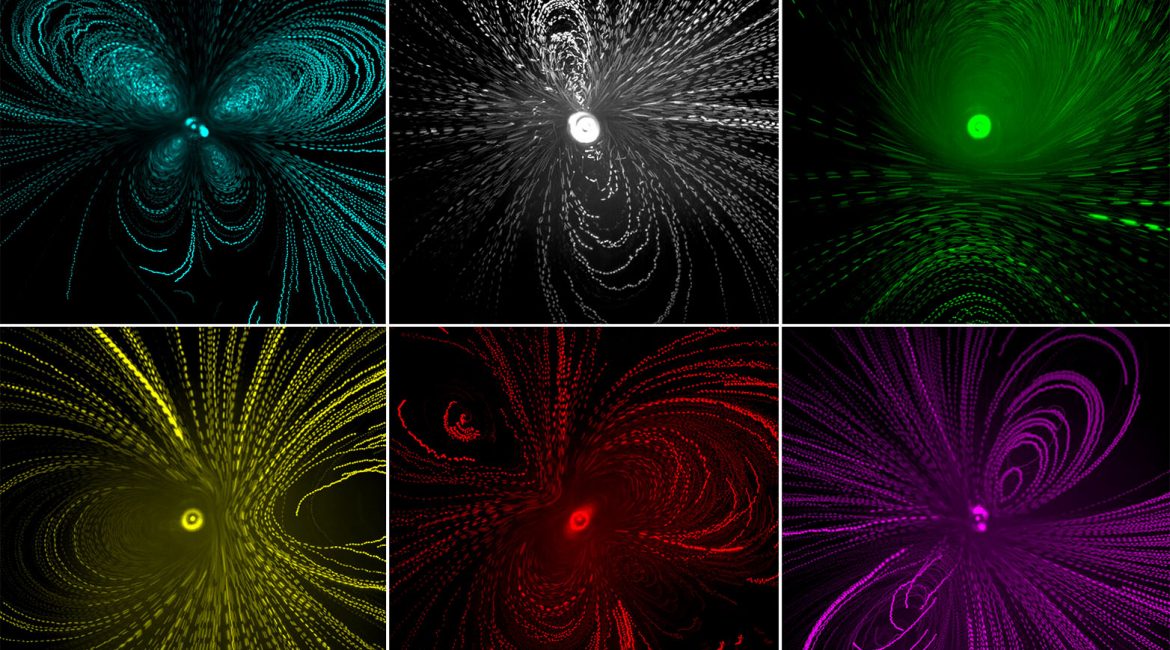Jan 14, 2023 (Nanowerk News) Hundreds of millions of light-years away in a distant galaxy, a star orbiting a supermassive black hole is being violently ripped apart under the black hole’s immense gravitational pull. As the star is shredded, its remnants are transformed into a stream of debris that rains...
Building better enzymes – by breaking them down
Jan 14, 2023 (Nanowerk News) Enzymes have the potential to transform the chemical industry by providing green alternatives to a slew of processes. These proteins act as biological catalysts, and with the help of molecular engineering, they can make naturally occurring reactions shift into turbo mode. Tailor-made enzymes could, for...
Integrated photonic circuits could help close the ‘terahertz gap’
Jan 14, 2023 (Nanowerk News) Researchers led by Cristina Benea-Chelmus in the Laboratory of Hybrid Photonics (HYLAB) in EPFL’s School of Engineering have taken a big step toward successfully exploiting the so-called terahertz gap, which lies between about 300-30,000 gigahertz (0.3 to 30 THz) on the electromagnetic spectrum. This range...
AI discovers new nanostructures
Jan 14, 2023 (Nanowerk News) Scientists at the U.S. Department of Energy’s (DOE) Brookhaven National Laboratory have successfully demonstrated that autonomous methods can discover new materials. The artificial intelligence (AI)-driven technique led to the discovery of three new nanostructures, including a first-of-its-kind nanoscale “ladder.” The research was published in Science...
Enzymes from bacteria and fungi break down plastic
Jan 13, 2023 (Nanowerk News) Plastic is useful but also poses an environmental problem. Scientists are now using enzymes from bacteria and fungi to break down plastic (bioRxiv, "Biochemical characterization and NMR study of a PET-hydrolyzing cutinase from Fusarium solani pisi"). Every year, the world produces 380 million tonnes of...
Chemists cook up a brand-new kind of nanomaterial
Jan 13, 2023 (Nanowerk News) There’s a new nanomaterial on the block. University of Oregon chemists have found a way to make carbon-based molecules with a unique structural feature: interlocking rings. Like other nanomaterials, these linked-together molecules have interesting properties that can be “tuned” by changing their size and chemical...
Genetically engineered bacterium enables biosynthesis of melanin nanoparticles
Jan 13, 2023 (Nanowerk News) Photothermal therapy (PTT) has attracted considerable attention for tumor treatment due to its unique advantages in minimal invasiveness and spatiotemporal selectivity. Melanin is a kind of multifunctional pigment found widely in mammals, plants and microbes, with great prospects as a PTT agent for cancer treatment....
Ultraviolet nanophotonics enables autofluorescence correlation spectroscopy on label-free proteins with a single tryptophan
Jan 13, 2023 (Nanowerk News) Proteins are naturally fluorescent in the ultraviolet, offering an appealing approach to probe proteins in their native state without introducing any external fluorescent label. The UV autofluorescence of proteins is based on the presence of tryptophan amino acids, which typically occur as 1 to 5...
Unravelling the interfacial interactions of the lead-free perovskite for efficient hydrogen production
Jan 13, 2023 (Nanowerk News) The conversion of solar energy into hydrogen energy represents a promising and green technique for addressing the energy shortage and reducing fossil fuel emissions. A research team from City University of Hong Kong (CityU) recently developed a lead-free perovskite photocatalyst that delivers highly efficient solar...
A precision arm for miniature robots
Jan 13, 2023 (Nanowerk News) Until now, microscopic robotic systems have had to make do without arms. Now researchers at ETH Zurich have developed an ultrasonically actuated glass needle that can be attached to a robotic arm. This lets them pump and mix minuscule amounts of liquid and trap particles....










